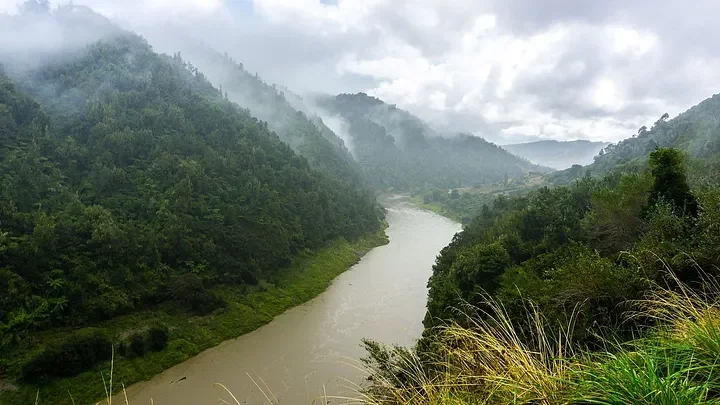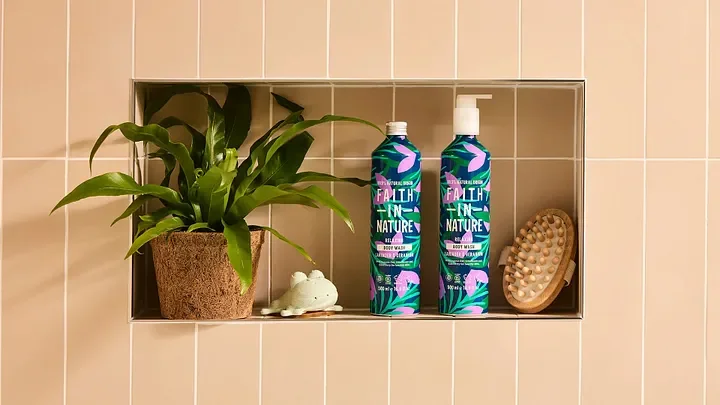Flowing from the Whanganui to the Usk — an idea full of twists and turns
The River Usk, or Afon Wysg in Welsh
The Nature on the Board story is gathering apace. My last few posts have each focused on a single development at a time — but as the story grows, that becomes increasingly difficult. So this post is more a snapshot of the many different ways it is now unfolding as the idea becomes more widely understood — and a little more normalised. Starting with a development particularly close to my heart…
Flowing from the Whanganui to the River Usk
One of the big inspirations behind Nature on the Board was the story of New Zealand’s river Whanganui being granted legal personhood. When I first heard that story I remember thinking it was so out there, but also so brilliant. What did it even mean for a river to become a legal ‘person’? Where did the river begin and end? How could something always in motion be defined as a single entity? And what happened to that river — and its rights — when it eventually met the sea?
New Zealand’s River Whanganui
This one story really switched me onto the broader Rights of Nature conversation and that, in turn, began to turn the way I saw the world upside down. Eventually it lead to wondering if frameworks like this could exist to give Nature a voice, why couldn’t those frameworks also be created within business? Why couldn’t Nature have a voice and a vote on the decisions that impact it? Especially at a company called Faith In Nature?
So that’s why I first called Earth Law Center — because they were the team behind the Whanganui story. I simply followed the headlines to the people who’d first turned my brain inside out — and Grant Wilson was kind enough to pick up from there.
As the idea developed, I began to see Nature on the Board as a way of smuggling in the Rights of Nature through the back door. Countries with closer links to indigenous ways of life seemed well placed to recognise the rights of rivers, of mountains, of parks and Nature more broadly. But countries such as mine — the UK — seemed a long way off. Still, companies were in a position to do what many governments weren’t. A company’s articles were its own mini constitution, and within that constitution it was possible to create real, meaningful change.
But it always felt like a sticking-plaster. My ideal, of course, is to live in a world where Nature’s rights are recognised at the intersect between us and the natural world around us. That’s why I was so overjoyed when Friends of Cave Creek Canyon in Arizona first told me they’d implemented the model to protect their corner of the Arizonan desert. And it’s why I’m elated that the River Usk in South Wales has done too.
By strange quirk of fate, many rivers in the UK have their own ‘nutrient management boards’ — a collection of people and organisations responsible for the health of those rivers. Which means that in a surreal leap of logic, those rivers can also appoint the river itself to the river’s own board. (I know, right?!) Which is exactly what the River Usk has done, naming Tom Johnstone as its own nature guardian, responsible for giving voice to the rights of the river within that river’s own board meetings.
And for this to happen just up-river from where I grew up is incredible. Brecon and its surrounding areas have always been close to my heart and I’m hugely grateful to Helen Lucocq, Tom Johnstone, Bannau and all at the the river’s NMB for making this possible.
Already, I know the Usk’s neighbouring river, the Wye, is in the process of doing the same, and I sincerely hope many more rivers do too — as a stepping stone toward a day when all rivers might be granted the same rights as the Whanganui.
Making Nature the N in NPD
When I tell people Nature’s been a director of Faith In Nature for nearly two years, many ask “So what’s really changed?” and mostly I point at culture change within the company, the way the broader conversation’s evolved and the real, legal, precedent this sets. But I know what people really want to see is change they can hold, touch, smell…
And that’s why I love seeing Faith In Nature’s relaunched products on shelf. Because Nature has been a director throughout their entire development process. Meaning Nature has had a say, and a vote, at every stage.
Those products are now in metal (instead of recycled plastic). They’re 99.5% natural (up from 99%). And our approach to the way we source their ingredients has changed — where we now look not just for plants with real benefits, but ways of growing those plants that benefit their environment — such as our Tea Tree oil which is now sourced from a supplier creating wildlife corridors for koalas and our Shea nut butter which is grown by women run co-operatives in Ghana.
In the background, we keep going. Nature never stops. But, for now, this is a clear line in the sand. Nature on the Board works.
Just imagine how the supermarket shelves might look if all products were developed this way…
Defining Nature: to include humanity or not?
Fellow Nature on the Board enthusiasts, House of Hackney, recently launched their ‘We Are Nature’ campaign with Lawyers for Nature to include humans within the dictionary definition of Nature.
While not, strictly speaking, a Nature on the Board development, one of the model’s great strengths is the many questions it raises. Why do things work this way? Why can’t they be bettered? Why is there this linguistic barrier between Nature and ourselves? And what might happen if we tore it down?
I love it.
And yet, if you look at the definition of Nature within Faith In Nature’s articles, we write: “Nature means the natural world and all non-human species that inhabit it”.
So why the discrepancy? And why not include humans within our own definition?
First it’s really important to say that I absolutely see humans as part of Nature and feel this ought to be reflected in wider conversation. But within the context of our initial drafting of Nature on the Board, we wanted to pay specific regard to the more-than-human, because until that point, every director, of every company on the planet, spoke in the interests of humans. We wanted to break that pattern and get out of our own way, to give voice to the many other beings who also call this planet home.
Was this the right call or not? To be discussed — and we can always revise it at a later date. But the key point is that it was a conscious decision that we felt was in the best interests of the natural world, just as the We Are Nature campaign is also a conscious choice to change the dictionary definition because that too is felt to be in the best interests of the natural world.
The cultural conversation
This whole movement, or story, or whatever it is, is built upon mainstreaming the Rights of Nature. That’s one of the reasons it’s so important that companies implement Nature on the Board — because of the role brands play in our everyday lives.
But for ideas to truly take hold, they need the support of arts and culture.
Arguably, Apple’s ad did more to mainstream the idea of Nature on the Board than any of us ever could, without even implementing it, nor explicitly mentioning it. At the other end of the spectrum, the long running UK radio show ‘The Archers’ recently mentioned the idea too.
But what will hopefully put a cultural rocket under Nature on the Board is when FuturEverything becomes the first cultural institution in the world to appoint Nature to its board. How will this idea morph and evolve as subject of ongoing creative inquiry? In FuturEverything’s words:
With almost 30 years experience as a creative think tank at the cutting edge of art and technology, it’s FutureEverything’s business to invent the future; now, we want Nature to reinvent us.
I look forward to ongoing conversations with all involved — because that’s precisely what I want to know. How will Nature reinvent us?
And, lastly, keep your eye out for the release of Damon Gameau’s latest film, ‘Future Council’, in which Nature on the Board also features. It premieres at this weekend’s Melbourne International Film Festival and will be released more widely in early 2025. I’ve met a lot of wonderful people since launching Nature on the Board, many of whom I’d admired for years before. But none have left my heart so happy as the eight incredible children who star in the movie, with whom I had the pleasure of spending a few hours in a glass box in the forest.



